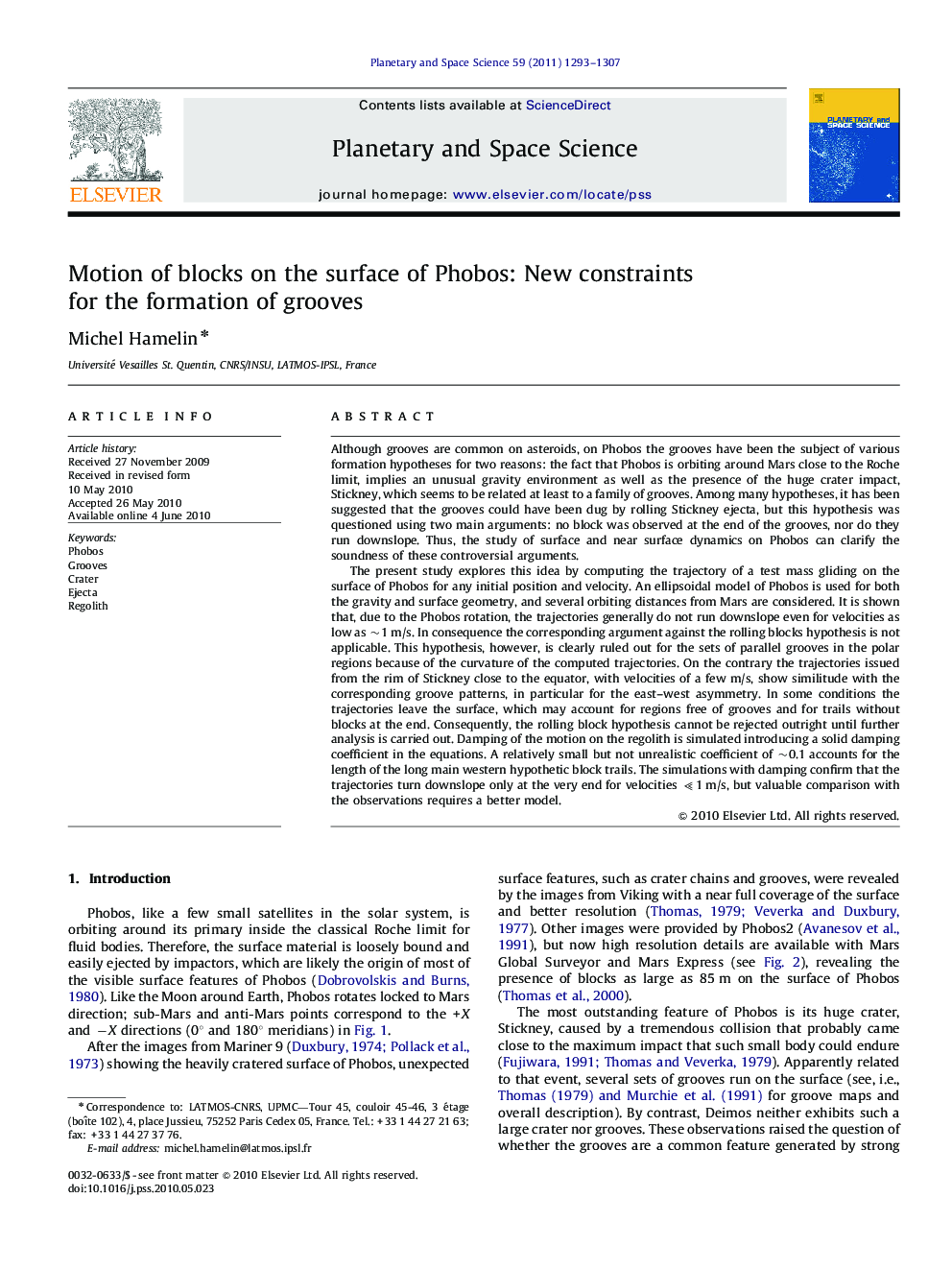| Article ID | Journal | Published Year | Pages | File Type |
|---|---|---|---|---|
| 10705270 | Planetary and Space Science | 2011 | 15 Pages |
Abstract
The present study explores this idea by computing the trajectory of a test mass gliding on the surface of Phobos for any initial position and velocity. An ellipsoidal model of Phobos is used for both the gravity and surface geometry, and several orbiting distances from Mars are considered. It is shown that, due to the Phobos rotation, the trajectories generally do not run downslope even for velocities as low as â¼1 m/s. In consequence the corresponding argument against the rolling blocks hypothesis is not applicable. This hypothesis, however, is clearly ruled out for the sets of parallel grooves in the polar regions because of the curvature of the computed trajectories. On the contrary the trajectories issued from the rim of Stickney close to the equator, with velocities of a few m/s, show similitude with the corresponding groove patterns, in particular for the east-west asymmetry. In some conditions the trajectories leave the surface, which may account for regions free of grooves and for trails without blocks at the end. Consequently, the rolling block hypothesis cannot be rejected outright until further analysis is carried out. Damping of the motion on the regolith is simulated introducing a solid damping coefficient in the equations. A relatively small but not unrealistic coefficient of â¼0.1 accounts for the length of the long main western hypothetic block trails. The simulations with damping confirm that the trajectories turn downslope only at the very end for velocities ⪡1 m/s, but valuable comparison with the observations requires a better model.
Related Topics
Physical Sciences and Engineering
Earth and Planetary Sciences
Geophysics
Authors
Michel Hamelin,
